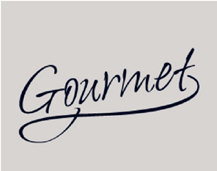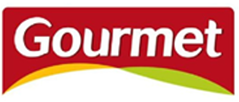Likelihood of confusion due to ‘powerword’ ? – Gourmet
The case: Aldi Süd applied for the following figurative mark for foodstuffs:

The trademark consisted of the advertising word ‘Gourmet’, which in itself was unprotectable. It also consisted of some graphic elements, and on this basis, the EUIPO considered the trademark to be protectable and published the application.
However, the Spanish Miquel Alimentació Grup filed an opposition. It invoked a likelihood of confusion with its earlier Spanish trademark, which was also registered for foodstuffs:

This trademark also consisted essentially of the advertising word ‘Gourmet’, which again is not protectable per se. It too was made up of some graphic elements.
Could a likelihood of confusion arise between these signs? After all, their main component ‘Gourmet’ was not even protectable! It was the graphic elements that had led to registration, and these were different between the two companies’ signs.
A likelihood of confusion can indeed exist, according to case law. As long as a trademark is registered, it is always granted a certain degree of protection, and this applies even if it essentially consists only of unprotectable elements. In that case, the scope of protection is correspondingly small, but for that protection to be removed, the trademark must first be cancelled, which requires independent invalidity proceedings to be initiated.
The likelihood of confusion between the two gourmet marks was thus assessed – as for all registered marks – according to their respective registered shapes. The question was whether the overall impression of the marks was similar in the eyes of the consumers.
The significant aspect here was that both trademarks consisted of the same word. As long as the trademarks still existed, they were to be included in their protection. The words were – due to their size – the dominant element of the signs.
The trademarks differed only in terms of their graphics, that is, the typeface of the words, the coloured background and the lines beneath the words. However, these graphic elements served only to highlight the words themselves, and therefore simply constituted a decorative addition to them.
Irrespective of this, in most cases the word element will dominate in a trademark, alongside a figurative element or elements. If a consumer wants to refer to the goods protected by the trademark, they will mention the word in that trademark, rather than describe its figurative elements. Only in rare cases would this be different.
Thus, the marks coincided in terms of their dominant elements – the word ‘gourmet’, which is in itself ineligible for protection. The marks were visually, phonetically and conceptually similar. Moreover, the goods covered by the marks were identical. There was thus a likelihood of confusion.
The Aldi trademark was not registered as an EU trademark.
General Court of the European Union, 15 December 2016, T-212/15.
Learnings: Don’t assume you won’t get into trouble if you use popular marketing words that are protected as a trademark by way of a graphic. It is of no assistance that everyone does it that way. Prior trademarks may exist with the same or similar ‘powerword’ and be registered for identical or similar goods. Your new trademark may then infringe these prior marks, which in business can often lead to serious consequences in terms of damages. You should avoid this.
Note: Please also read the following BestCase on the protectability of ‘powerword’ trademarks:
Protecting a descriptive organic brand via graphic? – JUST ORGANIC